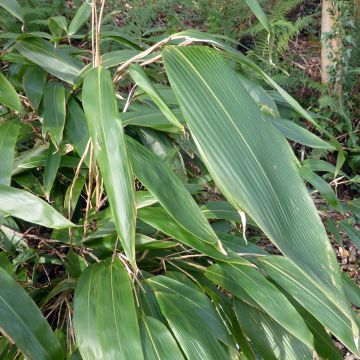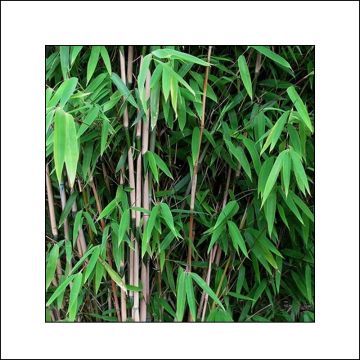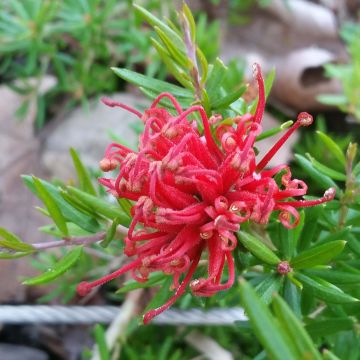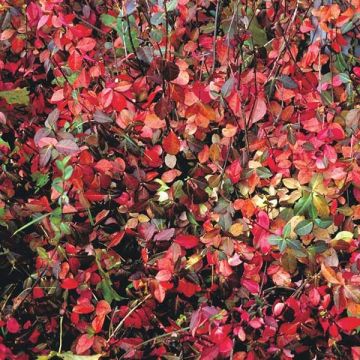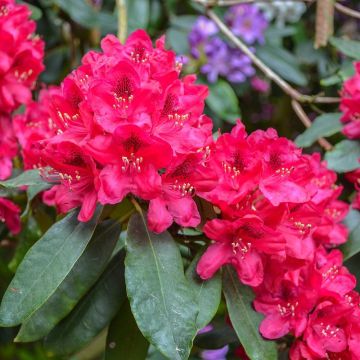

Sasa veitchii


Sasa veitchii


Sasa veitchii


Sasa veitchii
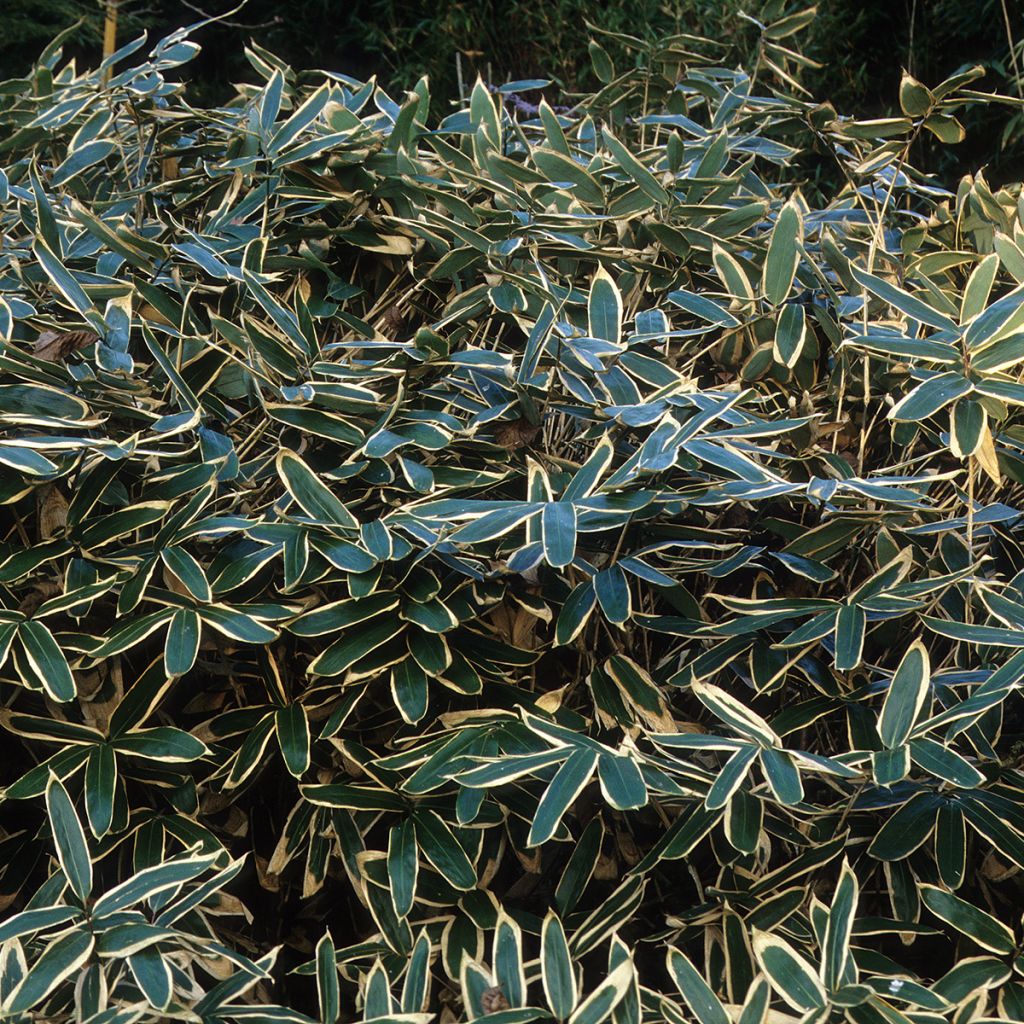

Sasa veitchii


Sasa veitchii


Sasa veitchii
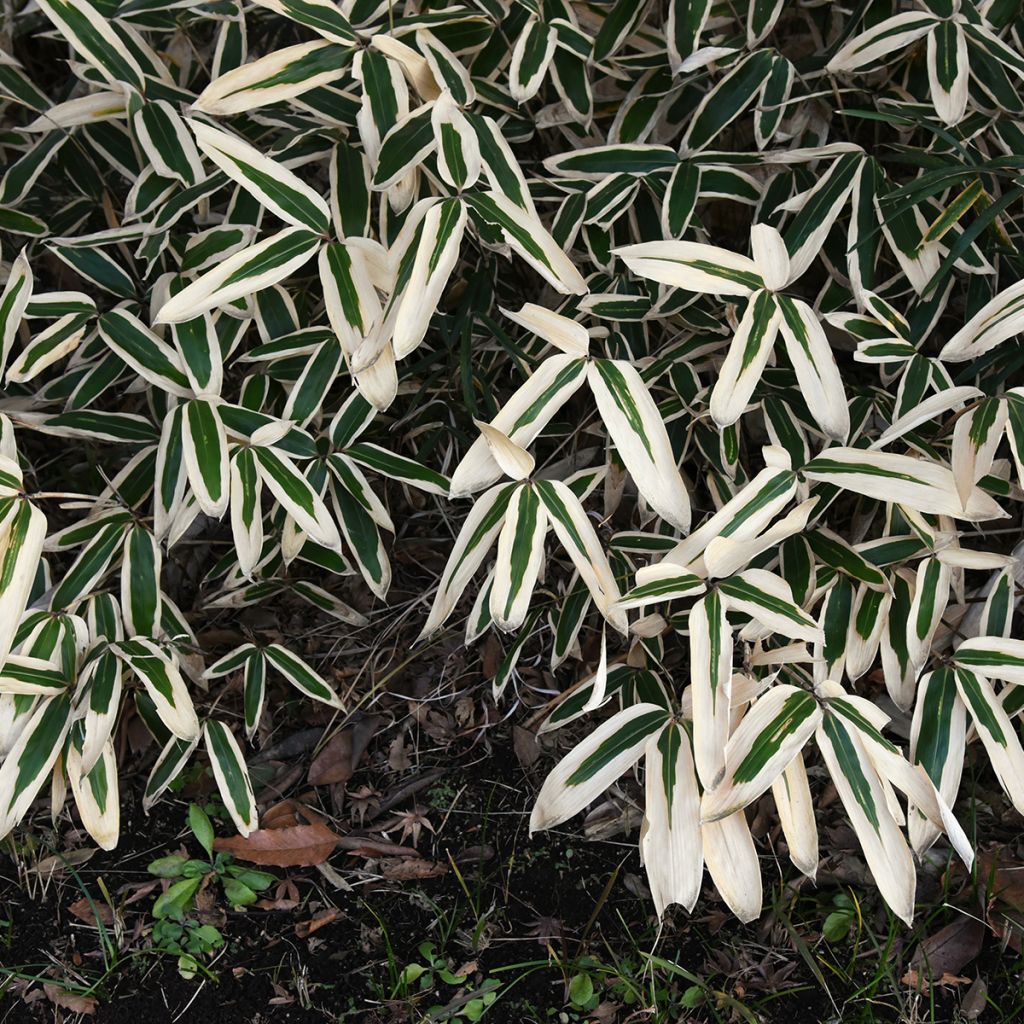

Sasa veitchii


Sasa veitchii
Sasa veitchii
Sasa veitchii
Veitch's Bamboo, Veitch's Sasadake, Veitch's Broad-Leaved Bamboo
This item cannot be shipped to the selected country
Delivery charge from €5.90
More information
Schedule delivery date,
and select date in basket
This plant carries a 24 months recovery warranty
More information
We guarantee the quality of our plants for a full growing cycle, and will replace at our expense any plant that fails to recover under normal climatic and planting conditions.
From €5.90 for pickup delivery and €6.90 for home delivery
Express home delivery from €8.90.
Does this plant fit my garden?
Set up your Plantfit profile →
Description
Sasa veitchii is a small Japanese bamboo that is sometimes called Sasa albo-marginata because of its large leaves that become edged with cream at the first cold. It is a small bamboo with a bushy and dense habit, displaying truly splendid foliage that often hides the slender canes. It is hardy and not invasive, thriving in light sun as well as dense shade, in any moist soil without excessive limestone. Essential in a Japanese garden, it excels near water features!
Sasa veitchii is a dwarf bamboo, belonging to the family of poaceae or grasses, native to the humid and mountainous forests of the large island of Honshu, in Japan. It is a species with trailing rhizomes. This modest bamboo develops thin and slender canes, averaging 1.20 m (4ft) in height and 4 to 8 mm (1in) in diameter. With rather fast growth, it spreads and colonizes the space, growing in dense, round and diffuse clumps. It has abundant foliage, composed of large evergreen leaves measuring 20 to 25 cm (8 to 10in) long and 5 cm (2in) wide, dark green with a glossy finish. In cold weather, the leaf edges tend to dry out and discolour, clearly revealing a white-cream margin or rib. The canes are slightly purplish, with persistent sheaths, densely covered with long hairs. They grow in diffuse clumps and disappear under the mass of foliage.
Thriving in almost any location, robust and perfectly hardy, this bamboo is particularly bright in the winter season and is suited to small gardens as well as larger spaces. It thrives in any exposure, even shade, but doesn't tolerate scorching sun, dry and limestone soils, and windy situations. Sasa veitchii can be used in various ways. Its strong rhizomes allow it to stabilise the edges of water features where it will appreciate the moisture. It can be used in woodland areas as a ground cover under trees such as Japanese Angelica and Japanese Maple. It can also be used as a hedge, to create a beautiful low to medium-sized screen that requires very little maintenance. This small bamboo can also be grown in large containers on a terrace or balcony.
Report an error about the product description
Sasa veitchii in pictures


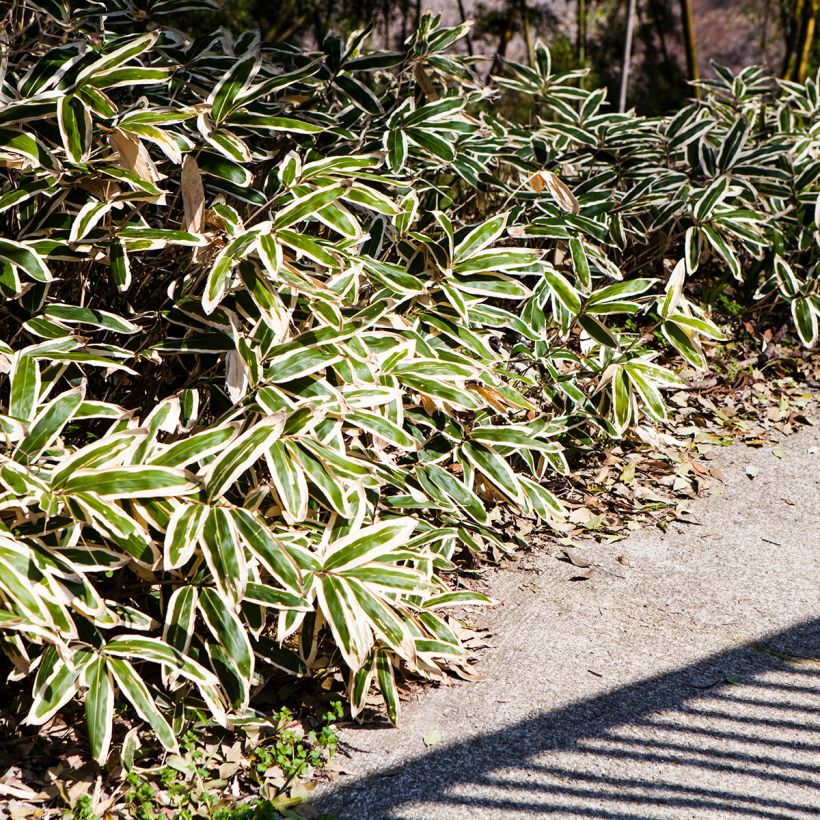

Plant habit
Foliage
Botanical data
Sasa
veitchii
Poaceae
Veitch's Bamboo, Veitch's Sasadake, Veitch's Broad-Leaved Bamboo
East Asia
Other Dwarf Bamboos
Planting and care
Sasa veitchii is a bamboo that requires little care. It can be planted in spring or autumn. As it spreads it is advisable to place a rhizome barrier when planting in order to limit its extension area. Perfectly hardy, it can withstand temperatures as low as -18°C (1°F). It should be placed in a position sheltered from the wind. Although it is relatively accommodating regarding the nature of the soil, it prefers a rich, moist to wet, well-drained, neutral to slightly acidic soil and does not tolerate drought and the presence of limestone. This bamboo particularly appreciates being close to water. For pot cultivation, use well-draining soil and provide fertilizer twice a year. Propagation can be done by rhizome cutting or clump division. The only maintenance required for Sasa veitchii is to cut the old canes when the new ones appear.
Planting period
Intended location
Care
-
, onOrder confirmed
Reply from on Promesse de fleurs
Evergreen shrubs
Haven't found what you were looking for?
Hardiness is the lowest winter temperature a plant can endure without suffering serious damage or even dying. However, hardiness is affected by location (a sheltered area, such as a patio), protection (winter cover) and soil type (hardiness is improved by well-drained soil).

Photo Sharing Terms & Conditions
In order to encourage gardeners to interact and share their experiences, Promesse de fleurs offers various media enabling content to be uploaded onto its Site - in particular via the ‘Photo sharing’ module.
The User agrees to refrain from:
- Posting any content that is illegal, prejudicial, insulting, racist, inciteful to hatred, revisionist, contrary to public decency, that infringes on privacy or on the privacy rights of third parties, in particular the publicity rights of persons and goods, intellectual property rights, or the right to privacy.
- Submitting content on behalf of a third party;
- Impersonate the identity of a third party and/or publish any personal information about a third party;
In general, the User undertakes to refrain from any unethical behaviour.
All Content (in particular text, comments, files, images, photos, videos, creative works, etc.), which may be subject to property or intellectual property rights, image or other private rights, shall remain the property of the User, subject to the limited rights granted by the terms of the licence granted by Promesse de fleurs as stated below. Users are at liberty to publish or not to publish such Content on the Site, notably via the ‘Photo Sharing’ facility, and accept that this Content shall be made public and freely accessible, notably on the Internet.
Users further acknowledge, undertake to have ,and guarantee that they hold all necessary rights and permissions to publish such material on the Site, in particular with regard to the legislation in force pertaining to any privacy, property, intellectual property, image, or contractual rights, or rights of any other nature. By publishing such Content on the Site, Users acknowledge accepting full liability as publishers of the Content within the meaning of the law, and grant Promesse de fleurs, free of charge, an inclusive, worldwide licence for the said Content for the entire duration of its publication, including all reproduction, representation, up/downloading, displaying, performing, transmission, and storage rights.
Users also grant permission for their name to be linked to the Content and accept that this link may not always be made available.
By engaging in posting material, Users consent to their Content becoming automatically accessible on the Internet, in particular on other sites and/or blogs and/or web pages of the Promesse de fleurs site, including in particular social pages and the Promesse de fleurs catalogue.
Users may secure the removal of entrusted content free of charge by issuing a simple request via our contact form.
The flowering period indicated on our website applies to countries and regions located in USDA zone 8 (France, the United Kingdom, Ireland, the Netherlands, etc.)
It will vary according to where you live:
- In zones 9 to 10 (Italy, Spain, Greece, etc.), flowering will occur about 2 to 4 weeks earlier.
- In zones 6 to 7 (Germany, Poland, Slovenia, and lower mountainous regions), flowering will be delayed by 2 to 3 weeks.
- In zone 5 (Central Europe, Scandinavia), blooming will be delayed by 3 to 5 weeks.
In temperate climates, pruning of spring-flowering shrubs (forsythia, spireas, etc.) should be done just after flowering.
Pruning of summer-flowering shrubs (Indian Lilac, Perovskia, etc.) can be done in winter or spring.
In cold regions as well as with frost-sensitive plants, avoid pruning too early when severe frosts may still occur.
The planting period indicated on our website applies to countries and regions located in USDA zone 8 (France, United Kingdom, Ireland, Netherlands).
It will vary according to where you live:
- In Mediterranean zones (Marseille, Madrid, Milan, etc.), autumn and winter are the best planting periods.
- In continental zones (Strasbourg, Munich, Vienna, etc.), delay planting by 2 to 3 weeks in spring and bring it forward by 2 to 4 weeks in autumn.
- In mountainous regions (the Alps, Pyrenees, Carpathians, etc.), it is best to plant in late spring (May-June) or late summer (August-September).
The harvesting period indicated on our website applies to countries and regions in USDA zone 8 (France, England, Ireland, the Netherlands).
In colder areas (Scandinavia, Poland, Austria...) fruit and vegetable harvests are likely to be delayed by 3-4 weeks.
In warmer areas (Italy, Spain, Greece, etc.), harvesting will probably take place earlier, depending on weather conditions.
The sowing periods indicated on our website apply to countries and regions within USDA Zone 8 (France, UK, Ireland, Netherlands).
In colder areas (Scandinavia, Poland, Austria...), delay any outdoor sowing by 3-4 weeks, or sow under glass.
In warmer climes (Italy, Spain, Greece, etc.), bring outdoor sowing forward by a few weeks.

































